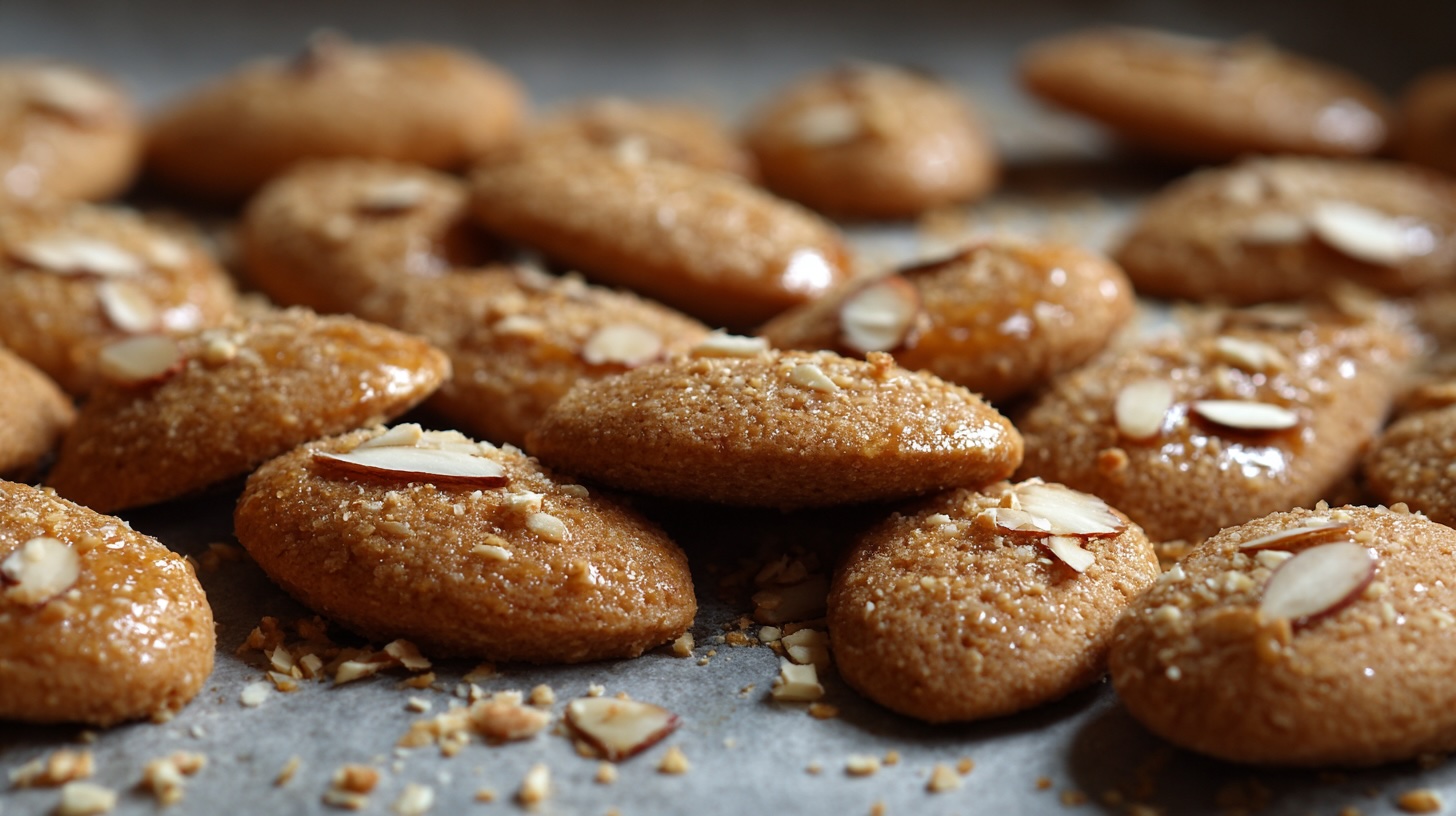Anmaki
If there’s a moment in life when your tastebuds need a hug, Anmaki is the edible embrace you’ve been waiting for. Imagine a soft, warm pancake, gently coiled around a luscious core of anko – the sweet red bean paste that has comforted generations of Japanese grandmas, insomniac poets, and sugar-deprived students. It’s unassuming. No gold leaf, no caramel cages, no foams or molecular gastronomy frills. Just a pillowy roll of joy you can eat in three polite bites or one impolite gobble.
Anmaki has roots in Edo-period Japan, when street food was often both an art form and a solution to the eternal question: how can I eat something delicious while walking dramatically under cherry blossoms? It was during this time that anko-laden snacks became popular. Anko itself has a longer story – the red azuki bean paste came to Japan from China, adopted by Buddhist monks as a vegetarian-friendly substitute for meat fillings. Over time, sweetened versions became a treat, not just a workaround.
Unlike the more famous dorayaki – which sandwiches the bean paste between two pancakes – anmaki wraps it in one. It’s subtle, more like a rolled crepe than a cake, and often made on teppan grills at festivals, sending off a scent of caramelised batter that draws children like moths to a very sweet flame.
There are regional variations, of course. In the Kanto region, the batter might be a bit fluffier, reminiscent of Western pancakes, while down in Kansai they lean thinner, closer to crepes. Some daring vendors spike the batter with matcha, yuzu, or even sakura essence. In modern Tokyo, you’ll find trendy cafes layering in whipped cream or folding the pancake like an envelope and tucking the anko in like it’s a love letter from the 1800s.
What makes anmaki special is the sheer minimalism of it. The entire experience balances on two components: the pancake and the anko. If either is off, the magic breaks. The pancake must be warm, slightly chewy, with a faint sweetness and toasted aroma. The anko should be smooth, not grainy, and sweet but not cloying. The best anmaki are the ones where the red bean paste is made fresh, and the pancakes are grilled right before your eyes.
It pairs beautifully with a warm cup of matcha, whose slight bitterness cuts the sweetness with the precision of a samurai sword. If you’re feeling more Western in mood, a cup of black coffee will also do the job nicely, as long as you’re prepared for the culture clash. Some like pairing it with genmaicha (brown rice tea) or even a cold barley tea in the summer, when eating a hot pancake in 30° heat becomes more of a spiritual test than a treat.
Anmaki doesn’t play well with overly rich companions. Think delicate: sliced Asian pears, a few cubes of chilled mochi, or maybe a scoop of black sesame ice cream if you’re feeling bold. It doesn’t want to compete. It wants to charm.
Is it healthy? Well, depends on your definition. Azuki beans themselves are little legumes of virtue, full of fibre and protein. They help with digestion, supposedly lower cholesterol, and might even be good for your skin if you believe the beauty blogs. But add sugar, wrap it in a pancake, and we’re not exactly talking superfood anymore. Still, as far as desserts go, it’s not the worst thing you could inhale in three seconds.
Where can you find it? Japan, obviously. Head to any matsuri (festival), traditional sweet shop (wagashi-ya), or even some konbini (convenience stores), and you might find one waiting for you like a tiny scroll of happiness. Outside Japan, your best bet is Japanese bakeries in big cities, or slightly obsessive home bakers who own too many copper pans and call their sourdough starter by name.
Want to make it yourself? You’re in luck. It’s surprisingly easy, and the hardest part is not eating the anko with a spoon straight from the pot.
Anmaki Recipe
Ingredients:
- 100g cake flour
- 1 egg
- 1 tbsp sugar
- 120ml milk
- 1 tbsp honey
- ½ tsp baking powder
- A pinch of salt
- Neutral oil for greasing
- 200g anko (smooth or chunky, your choice)
Method:
In a mixing bowl, beat the egg and sugar until slightly frothy. Add milk and honey, then sift in the flour, baking powder, and salt. Whisk until smooth and let the batter rest for 15 minutes. This is mandatory. Use the time to question your life choices or preheat your non-stick pan over medium heat.
Grease the pan lightly, pour a small ladleful of batter, and swirl it to make a thin round pancake. Cook until bubbles form and the edges lift, flip and cook for 30 more seconds. Repeat until you have a respectable stack.
Place a generous spoonful of anko at one edge of the pancake and roll it tightly. Don’t overfill unless you enjoy bean paste explosions.
Serve warm, maybe with a dramatic sigh and a cup of green tea. Then close your eyes and pretend you’re in Kyoto, under a cherry tree, in a kimono you can’t afford. Bliss.
If ever there was a dessert that whispers rather than shouts, that soothes rather than overwhelms, anmaki is it. A quiet hero in a world of loud sweets.



